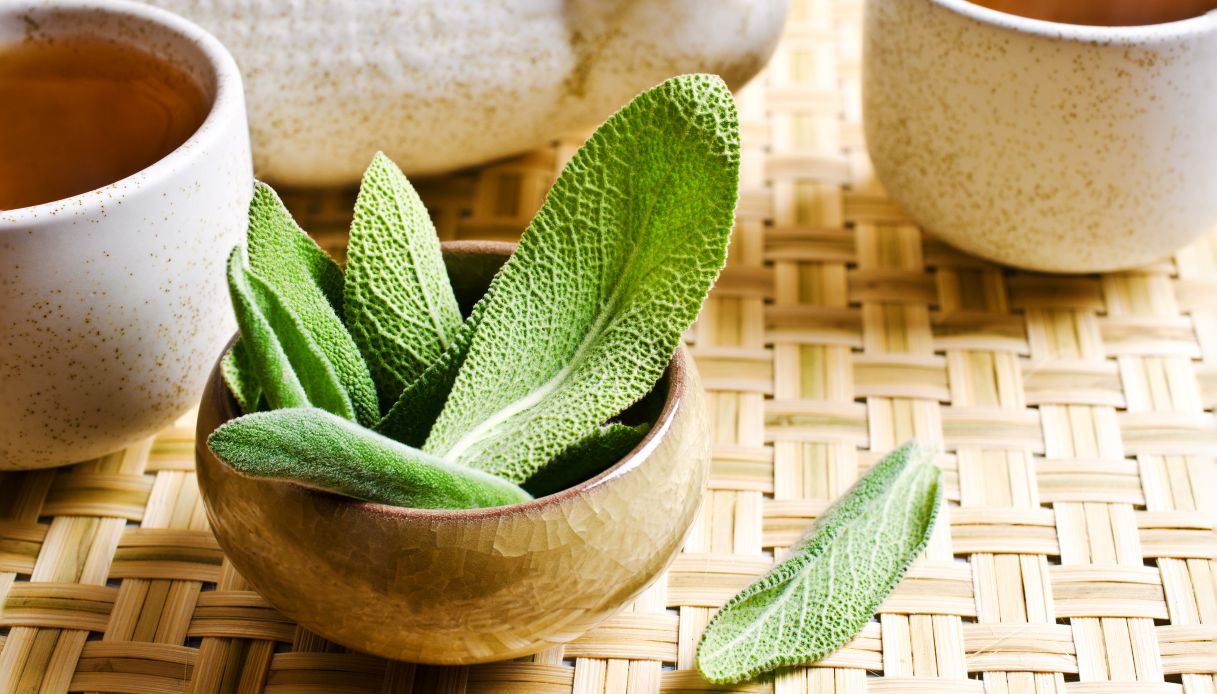Property
Sage is an aromatic known for its use in cooking but with several property which make it a valuable plant for health. There are over a thousand species of sage, all belonging to the family of Lamiaceae O Labiatae. Several sage plants are grown for ornamental purposes due to the beauty and uniqueness of the flowers, while other species are used as a flavoring condiment in the kitchen and as a natural remedy in herbal medicine and phytotherapy. Among these we find the Salvia officinalis and the Clary sage of which the leaves and theessential oil, constituent to which the innumerable properties of sage are attributed.
In the past, sage was considered a panacea and was used to treat a multitude of ailments and health problems. Not surprisingly, the name assigned to this plant derives from the Latin salvere, which refers to stay healthy. Also known as tea of Greece, sacred herb, sage herb, selvia and satevia, sage was considered a plant of longevity, capable of maintaining good health and instilling wisdom in those who used it regularly. Sage was also one of the most used remedies against infections, snake bites, coughs and sore throats and was also attributed aphrodisiac properties. Today we know that sage has above all properties:
- disinfectants
- astringents
- antivirals
- antioxidants
- cicatrizants
- antispasmodiche
- digestive
- anti-sweat
Sage is also known to be a great ally for women’s health as it helps to better cope with the menstrual cycle and the menopause phase.
Benefits
Thanks to property astringent, antiviral and disinfectant of sage, this aromatic plant can be very useful in case of infections and inflammations of various types and help fight sore throats, colds, gingivitis, skin impurities, mycosis and herpes.
Sage also has antispasmodic and digestive properties, therefore its use brings benefits in case of poor appetite, feeling of fullness after meals and accumulation of gas in the stomach and intestines which causes aerophagia, bloating and abdominal pain.
As for women’s health, sage is an effective remedy to regulate the menstrual cycle, relieve pain during menstruation, reduce hot flashes and night sweats in menopause. In general, sage is used against excessive sweating, a condition known as hyperhidrosis. Sage is also used during the weaning of children, to reduce milk production.
Finally, thanks to its antioxidant properties, sage can help preserve health and help support memory and cognitive functions and prevent premature aging and the onset of disease.
Uses
the Sage leaves they are widely used in the kitchen for their aromatic properties; they can be added to sauces, sauces, sauces or used to give flavor to soups, omelettes, vegetable side dishes and many other dishes. The leaves of Salvia maxima, known for their considerable size, are generally eaten fried, battered or plain. Little known but interesting are the leaves of Salvia pineapple which, as the name suggests, recall the taste of pineapple and are mainly used to flavor spoon desserts. Chia seeds are also derived from a species of sage, specifically the Sage: they are appreciated for their content in essential fatty acids and are used in cooking to thicken puddings, sauces and soups.
To enjoy the therapeutic properties of sage you can instead take infusions prepared with the leaves or, alternatively, you can use the mother tincture of sage. Sage tea is prepared with about a tablespoon of dried sage leaves (Salvia officinalis) for a cup of water. Two to six cups a day are consumed in case of flu, cough, sore throat, to reduce milk production during weaning, regularize the menstrual cycle, relieve menstrual pain and to reduce symptoms of menopause, such as hot flashes. heat and profuse sweating. To counteract digestive problems, the infusion is consumed before main meals and helps to promote appetite and reduce the feeling of excessive fullness, swollen stomach and abdominal pain. The dosage of the mother tincture of sage it is instead of 20-25 drops to be dispersed in a little water and to be taken up to three times a day.
For external use, the infusion, sage hydrolate andessential oil, the latter by diluting a few drops in a tablespoon of vegetable oil. The sage tea and hydrosol are excellent for cleansing the skin and counteracting excess sebum and impurities. The essential oil of Clary sage instead it is a remedy to be used in case of cold sores, mycosis of the skin or nails, boils and small wounds. Finally, the essential oil diffused in the burner or diffuser and the dried sage leaves, rolled up, tied in bunches and burned, are useful for perfuming and purifying the environment.
.
